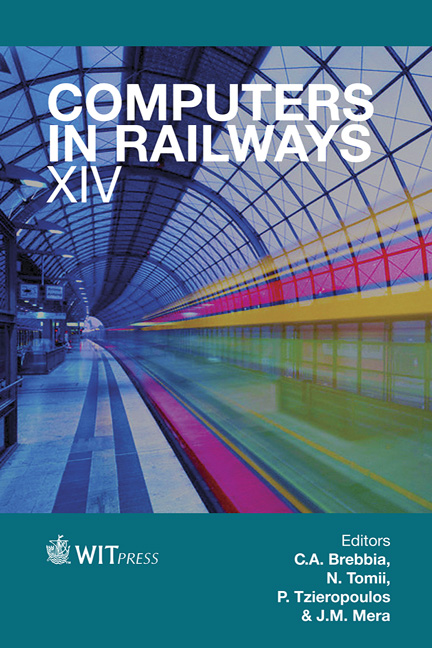An Optimized, Automatic TMS In Operations In Roma Tiburtina And Monfalcone Stations
Price
Free (open access)
Transaction
Volume
135
Pages
13
Page Range
635 - 647
Published
2014
Size
363 kb
Paper DOI
10.2495/CR140531
Copyright
WIT Press
Author(s)
S. Foglietta, G. Leo, C. Mannino, P. Perticaroli & M. Piacentini
Abstract
A remarkable number of works on automatic train dispatching have recently appeared in the scientific literature, many of which are also exploiting some exact or heuristic optimization. Despite of this interest, very few automatic dispatching systems are actually in operation in main line or mass transit networks, mostly devoted to simple tasks in small lines. In this work we describe a recent implementation of a real time dispatching system monitoring and controlling trains in two large stations, namely Roma Tiburtina and Monfalcone. The system exploits optimization in order to take and implement crucial dispatching decisions. In particular, the algorithm finds suitable routes and schedules for the movements of trains in the station, so as to minimize costs and delays. The resulting trains movement is conflict-free, and respects safety and specific traffic rules. Also, it computes, exploits and provides accurate traffic forecast information based on the trains and railway real time status. A heuristic and an exact optimization algorithm, the latter based on Mixed Integer Linear Programming, are developed and run independently to introduce redundancy and increase safety. Computational experience on real-life instances shows that both methods are able to provide either good or optimal solutions in a very short time (less than a second). A first release of the system has been in operation since February 2014; the final release is scheduled to be operational by December 2014. Keywords: automatic railway traffic control, real-time trains dispatching, interlocking, optimization algorithms.
Keywords
automatic railway traffic control, real-time trains dispatching, interlocking, optimization algorithms.





